Creating visually distinctive products requires understanding the full range of color customization possibilities for technical materials. The ability to incorporate multiple colors into nylon webbing can dramatically enhance brand recognition while maintaining the performance characteristics essential for demanding applications.
Yes, nylon webbing can be dyed in multiple colors using several specialized techniques including gradient dyeing, two-toning, and pattern dyeing. These processes ensure precise color combinations while maintaining structural integrity, creating visual effects like stripes, patterns, and color transitions that enhance product aesthetics and brand identity across diverse applications.
Explore multi-color dyeing, custom color matching, and durable coloring processes to choose the best colored webbing for your product development needs.
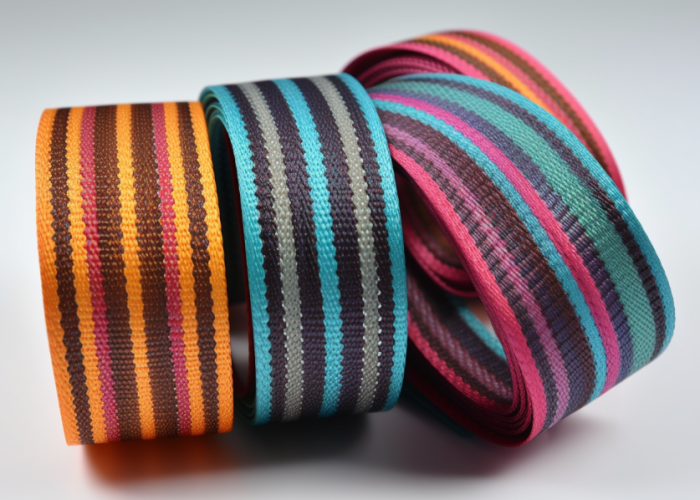

Webbing manufacturing expert with 15+ years of experience helping product developers build high-performance straps for industrial, medical, and outdoor use.
Nylon webbing can be dyed using five distinct techniques: single color application, gradient effects, multiple color sections, two-toning, and custom patterns. Each method creates different visual effects while maintaining the webbing’s structural integrity, allowing product designers to achieve specific aesthetic requirements.
Single Color Webbing provides consistent coloration throughout the entire material. This basic technique ensures even color penetration for maximum color retention and uniform appearance. It serves as the foundation for more advanced dyeing methods and offers reliable performance for standard applications.
Gradient Color creates smooth transitions between colors on a single piece of webbing. This effect produces a gradual shift from one shade to another, adding visual interest to products. The process requires careful control of dye application to ensure consistent results that enhance product aesthetics without compromising performance.
Multiple Color sections feature distinct color areas within a single webbing piece. Unlike gradients, these applications create clearly defined boundaries between different colored sections. This approach is ideal for creating visual indicators or segmentation within products where color-coding serves both functional and aesthetic purposes.
Two-toning applies different colors to opposite sides or specific portions of the webbing. This technique creates interesting visual contrast while maintaining consistent structural properties. Two-toned webbing is particularly useful for applications where different visual appearances are needed depending on viewing angle or installation position.
Custom Patterns like stripes, geometric designs, and camouflage effects offer the highest level of visual customization. These specialized treatments incorporate multiple colors in precise configurations to meet specific design requirements. Pattern dyeing allows product developers to integrate branding elements or functional indicators directly into the webbing structure.
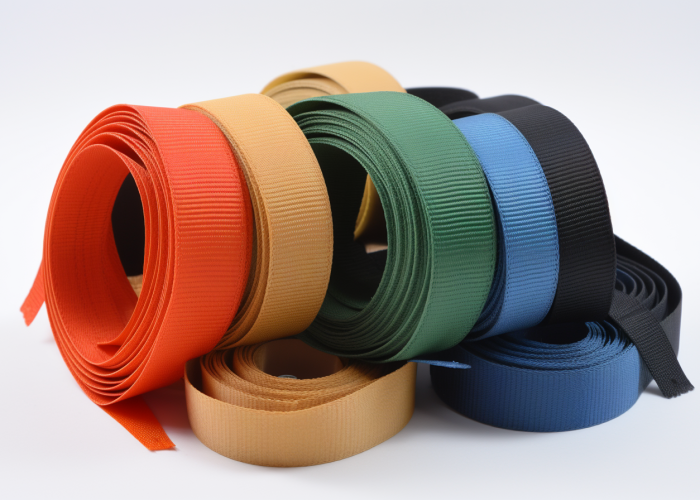
Custom color matching for nylon webbing includes Pantone system alignment, brand-specific color development, and exact color specification formulations. These services ensure consistent brand identity across all product components while maximizing nylon webbing’s performance characteristics.
The color matching process starts with your specifications, often using standardized systems like Pantone. Our color lab analyzes these specifications and creates custom dye formulations specifically for nylon’s unique properties. This approach ensures the closest possible match to your target color while accounting for how colors appear differently on nylon compared to other materials.
Before full production, we validate color accuracy through sample swatches for your approval, testing under various lighting conditions, and documenting formulations for future orders. These quality checks ensure consistency across multiple production runs so your products maintain uniform appearance.
Minimum order requirements vary based on color complexity. Standard custom colors typically have lower minimum quantities than highly specialized formulations. Understanding these requirements early helps you plan effectively for integrating custom colors into your product designs.
Some technical limitations exist in matching certain highly saturated colors or special effects. These considerations should be discussed during development to align expectations with technical possibilities and ensure optimal results for your specific application.
Color selection for nylon webbing is influenced by application requirements, environmental exposure conditions, brand identity needs, and technical dyeing limitations. Understanding these factors helps product developers select optimal color solutions that balance aesthetics with performance for specific end-use applications.
Application requirements often dictate color choices, especially for safety-critical implementations. High-visibility colors like fluorescent yellow, orange, and red provide maximum contrast against typical backgrounds, enhancing recognition in emergency situations. These considerations are crucial for rescue equipment, safety harnesses, and outdoor gear where visibility can be essential.
Environmental exposure significantly impacts color performance. Webbing used outdoors requires colors with superior UV resistance to prevent fading. Similarly, applications exposed to moisture, chemicals, or abrasion need specialized formulations that maintain appearance despite these challenges. Considering these factors early prevents appearance deterioration during product use.
Brand identity alignment is essential for consumer-facing products. Consistent colors across all components reinforce brand recognition and quality perception. This factor matters most when webbing serves as a visible design element rather than being hidden within the product structure.
Production capabilities introduce practical considerations that influence color selection. Some colors require specialized processes or have minimum order requirements. Understanding these parameters helps you make informed decisions that balance design goals with manufacturing realities.
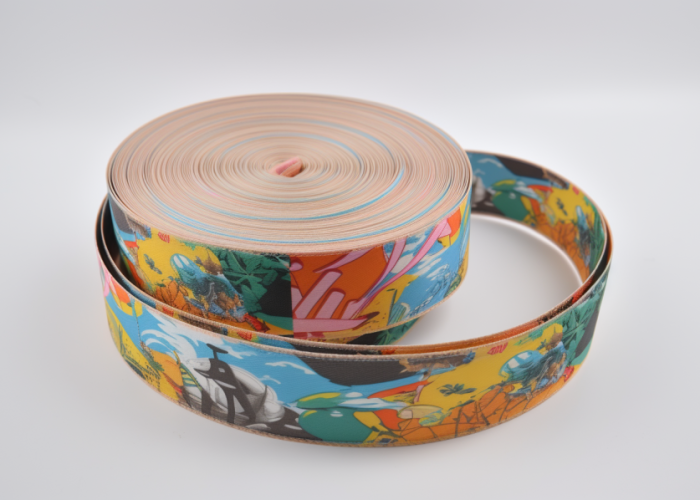
Two-toning nylon webbing uses specialized dyeing processes that apply different colors to distinct sections or sides of the material. This technique creates visually distinctive products while maintaining structural integrity through carefully controlled dyeing parameters that prevent fiber degradation.
The process begins with proper preparation of the nylon webbing to ensure optimal dye absorption. This critical first step creates a clean, receptive surface that allows for uniform color development. After preparation, the first color is applied under controlled conditions to establish the base appearance.
To create distinct color sections, masking techniques protect previously dyed areas before applying secondary colors. These methods may include physical barriers or specialized equipment that enables precise color application only where desired. The quality of these masking techniques directly affects how clean and sharp the color boundaries appear in the finished product.
Careful control of temperature and pressure during two-toning significantly influences final quality. Maintaining consistent parameters throughout production ensures repeatable results and prevents colors from bleeding into each other. This precision is especially important when creating sharp color transitions or boundaries.
Two-toned webbing serves many practical applications across industries. In safety products, it creates visual indicators that help users quickly identify proper orientation. For consumer goods, it offers distinctive aesthetics that enhance brand recognition and product differentiation in competitive markets.
Dyeing techniques affect nylon webbing durability through chemical interactions with fiber structures, thermal exposure during processing, and potential tensile property changes. Proper manufacturing processes maintain critical performance characteristics while achieving desired color effects through careful material handling.
The chemical interaction between dyes and nylon fibers represents the most important durability consideration. Properly formulated dye systems create strong bonds with nylon’s molecular structure without weakening its inherent strength. This balance ensures colors remain vibrant while the webbing maintains its mechanical properties throughout its service life.
Temperature control during dyeing is essential for preserving nylon’s performance characteristics. Optimal temperature ranges allow for complete color development without compromising the material’s molecular structure. Maintaining these parameters preserves the webbing’s strength and flexibility while achieving the desired color effect.
Processing time also influences final durability outcomes. Balanced exposure to dyeing conditions ensures thorough color development without unnecessarily stressing the material. This optimization maintains both appearance and performance qualities, ensuring the colored webbing meets all functional requirements.
Protective treatments can enhance dyed webbing durability for demanding applications. These specialized finishes improve resistance to UV exposure, abrasion, or chemical contact depending on specific needs. Combining appropriate protective treatments with proper dyeing techniques creates webbing products that maintain both appearance and performance over time.
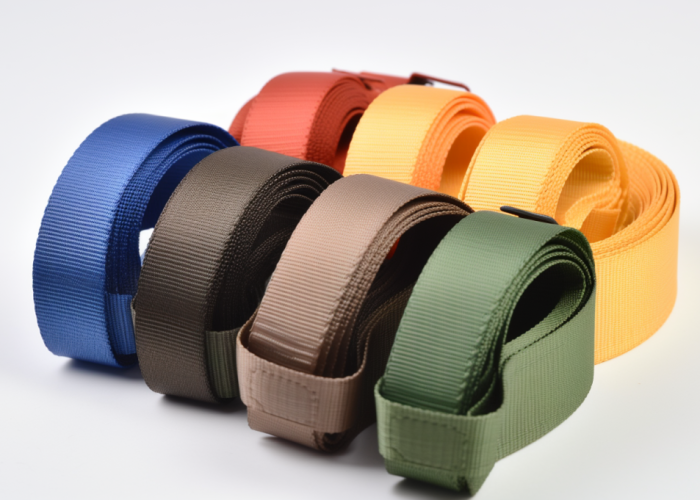
Color fastness in multi-color nylon webbing depends on dye chemistry, application technique, post-dyeing treatments, and environmental exposure conditions. Modern dyeing processes achieve excellent color retention through specialized formulations designed specifically for nylon’s molecular structure.
Dye selection is the primary factor determining color fastness. Acid dyes create strong bonds with nylon’s molecular structure, providing excellent resistance to washing and good light stability. These specialized dyes establish durable connections that resist color loss during normal use and environmental exposure.
Application factors like temperature, time, and pH significantly impact long-term color performance. Optimized dyeing parameters ensure complete color penetration and fixation, creating stronger connections between dyes and fibers. These controls directly influence how well colors withstand environmental challenges.
Post-dyeing treatments enhance color stability and longevity. Specialized finishes protect colors from UV degradation, washing, and chemical exposure. These treatments create additional protection that shields the dyed webbing from factors that could otherwise cause fading or color change.
Standard testing for color fastness includes accelerated weathering, wash testing, and abrasion evaluation. These assessments provide reliable data about expected color performance under various conditions, helping you understand how colored webbing will perform throughout your product’s lifecycle.
Pretreatment processes directly impact dye absorption, color uniformity, and long-term durability of dyed nylon webbing. Proper preparation removes manufacturing residues, optimizes surface conditions, and ensures consistent dye receptivity across the entire material.
Thorough cleaning removes manufacturing oils, waxes, and processing agents that could interfere with even dye penetration. This critical first step creates a consistent surface for coloration, eliminating barriers to dye-fiber interaction that could otherwise cause spotting or uneven appearance.
Surface preparation enhances dye receptivity by optimizing the molecular structure of nylon fibers. This process creates additional binding sites for dye molecules, improving color depth and uniformity in the finished product. Proper surface preparation is particularly important for achieving rich, vibrant colors that maintain their appearance over time.
Temperature stabilization before dyeing ensures uniform fiber structure throughout the material. This preparation optimizes the molecular configuration of nylon, creating consistent receptivity to colorants. Proper temperature conditioning prevents irregular dye uptake that could result in streaking or blotchy coloration.
Chemical balancing establishes ideal conditions for specific dye systems. This precise control creates the optimal environment for dye-fiber interaction, maximizing color development while preserving fiber properties. Proper chemical preparation is essential for achieving consistent, repeatable coloration results across production runs.
Quality inspection after pre-treatment verifies readiness for dyeing. This assessment confirms successful preparation and uniform material characteristics throughout. Thorough inspection prevents potential issues by identifying and addressing any inconsistencies before the dyeing process begins.
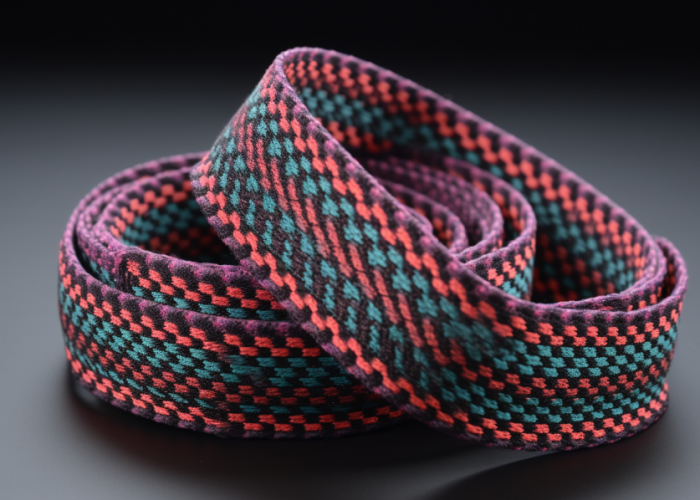
Multi-color nylon webbing offers product developers exceptional design flexibility while maintaining essential performance characteristics. From gradient effects to precise two-toning, these specialized dyeing capabilities enhance both aesthetics and functionality. Our custom color matching, durability-preserving processes, and technical expertise ensure your products stand out while performing reliably in demanding applications—transforming ordinary webbing into distinctive brand elements for your next product innovation.
High-visibility fluorescent colors (yellow, orange, red) excel in safety applications. Black, navy blue, and neutral tones offer superior UV resistance for outdoor use. Brand-matched colors create consistency in consumer products. Color selection should prioritize visibility, durability, and functional requirements for your specific application.
Yes, nylon webbing can be dyed to match custom colors using Pantone references and precision color-matching systems. The polyamide structure of nylon readily accepts acid dyes, allowing for excellent color development and accurate matching to exact specifications. Custom color development involves laboratory formulation followed by production validation.
Properly controlled dyeing processes maintain nylon webbing strength while adding color. Key factors include optimized temperature management, appropriate chemical formulations, and controlled exposure time. Quality dyeing operations actually enhance durability by simultaneously applying color and protective treatments that shield fibers from environmental degradation.
Two-phase dyeing techniques enhance nylon webbing durability by incorporating protective agents during the coloration process. These specialized methods simultaneously apply color and performance-enhancing treatments. The most advanced techniques integrate UV stabilizers, anti-microbial properties, and abrasion resistance directly into the dyeing operation, creating multi-functional performance benefits.
Acid dyes provide superior color-fastness in nylon webbing through strong ionic bonding with the material’s polyamide structure. These specialized formulations create excellent wash fastness and good light stability. For extreme UV exposure applications, enhanced dye systems with additional light-stable chemistry deliver exceptional fade resistance.
Pretreatment creates optimal conditions for uniform dye penetration and maximum color-fiber bonding in nylon webbing. Proper cleaning removes processing residues that would otherwise interfere with dye adherence. Controlled temperature conditioning and pH balancing establish ideal molecular conditions for durable color development that maintains performance characteristics throughout the product lifecycle.